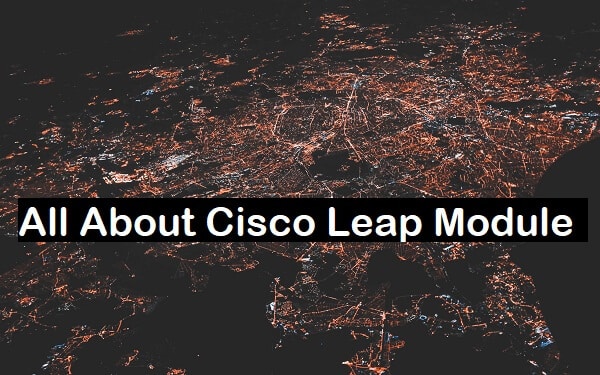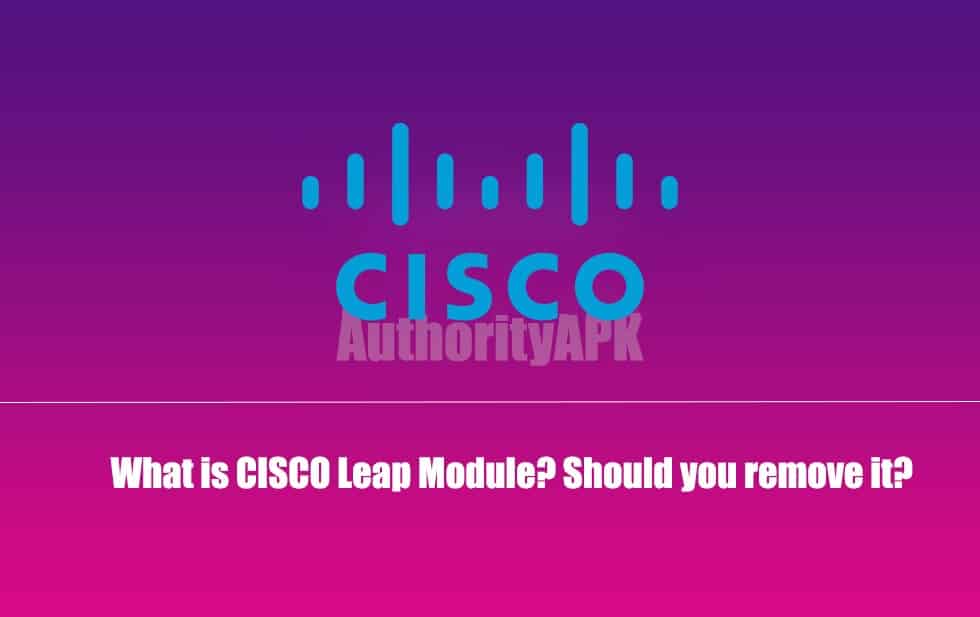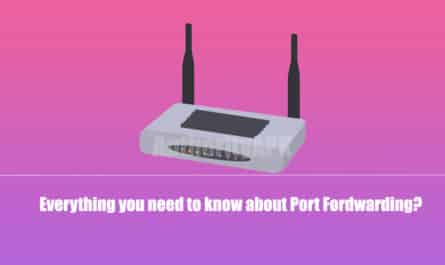Windows has dominated the computing market ever since it was launched. Due to its easy to understand UI, accessibility and compatibility nature, plenty of people use Windows. Two of the most common Windows versions today are – Windows 7 and Windows 10.
Plenty of predefined software and services are needed for the operating system to run correctly. These software/programs modulate the working and interaction of the OS with the processor and vice-versa. Users often encounter a few modules running silently in the background – Cisco EAP-FAST Module, CISCO LEAP Module and Cisco PEAP Module.

Users often wonder what these programs are and why they run on a Microsoft-built OS. Several users even consider removing them from their systems, but is the process that easy? You see, the following modules are not a part of the active Windows pool (i.e. they run in the background). So, does it mean they are some malware or spyware deployed by Cisco to steal user information? Is it OK to uninstall these programs? How to uninstall these programs from the system? If you have these questions in your mind right now then don’t worry, we are here to guide you.
What is Akamai Netsession Client? Should I remove it from my PC?
What are Cisco Module programs?
The Cisco LEAP Module programs – also known as LEAP Modules, include a group of background programs. These include –
- EAP-FAST – Extensible Authentication Protocol-Flexible Authentication (via Secure Tunnelling)
- PEAP – Protected Extensible Authentication Protocol
- LEAP – Lightweight Extensible Authentication Protocol
Cisco LEAP Module
It is a mode of encryption used by wireless networks (WLANs) based on 802.1X type authentication. It is used to ensure a strong authentication between the server (RADIUS server) and the client with the help of key-sharing. This key is an encrypted (strong) password between the client and server.
It ensures authentication and authorization between the interacting (i.e. during hosting and working) devices/systems. This program runs on different versions of Windows that include – XP, Vista, 7, 8, 8.1 & 10. It can be used on laptops and desktops, and those with Surface devices can also use it easily.
Cisco LEAP uses the 802.1X framework for its connectivity and security needs. Thanks to its EAP (Extensible Authentication Protocol) wireless-LAN support, it pioneered in this department. With EAP integration, all forward responses are done using RADIUS protocol to a remote EAP server.
This remote server acts as an authenticator for the entire session. As a result, you get a centralized authentication management system. LEAP was introduced in December 2000, and since then, it has improved WLAN security and authentication. To read more about Cisco LEAP, you can click here.
Need for Cisco LEAP Module
As mentioned, it secures the wireless network channel for an area with WLAN accessibility. This module can be primarily used for –
- Wireless network connections (WLANs/WANs) for campuses (offices, schools or colleges).
- Connectivity for mobile users and mobile networks. Different networks use different channels of connectivity. LEAP ensures there is no inter-mixing of these connections. Inter-mixing causes network interference and disconnections hence
- Public access to parks, cities, malls, airports and railway stations. These places are most vulnerable to external viruses and hackers. Public Wi-Fi connections are a feast for them to steal user-information. However, with the LEAP module, stealing information becomes impossible for hackers.
- Temporary network access for military operations and other portable operations. LEAP can be applied to full-fledged deployment units and portable ones. It provides secure access throughout anyway.
- It protects your resources to a great extent. This means that others cannot interfere with the work of other people. Uniqueness is maintained throughout, and the connections are free from interference. This is an important security measure.
So, as you can already see, the LEAP module is not at all harmful as some people often think. It has been in use for over 20 years, and Cisco ensures to keep it well-updated to match today’s standards. LEAP is necessary for those servers/clients used publicly and in the open. Open network frameworks can also benefit from this as this module provides a good security standard (overall).
Should the Cisco LEAP Module, Cisco EAP Module & Cisco PEAP Modules be removed?
Though removing these modules and frameworks is pretty easy, it has several downsides. A network is always susceptible to external viruses, malicious attacks and more. Secured connections are far less prone to getting hacked and/or tampered with. The information in these channels is very important; the packets contain metadata and more. LEAP provides overall secure access and a clean channel for data flow. Before you proceed with the uninstallation process, consider a few critical questions – the whys and the what-ifs.
- Do you connect to domain networks?
Domain networks provide gateway access to the internet. These networks are essential for internet accessibility through secured channels. The information goes through an encrypted framework (gateways) before reaching the servers. After processing the information/request, the servers respond accordingly, and these requests are managed/answered.
- Have you ever used any of the aforementioned Cisco products before?
Cisco is well-known for its products (especially in the networking department). From an array of routers, modems, security systems and switches, they have managed to control the networking unit globally. Just like their hardware, the backend software-based products are no exception. If you haven’t used LEAP before, then it is better to understand that it is essential for safe/secure internet access.
- Did you notice any recent changes on your system before the issue that you’ve been facing?
These issues may not be due to any Cisco products installed on your device. There may be some other reason behind the issues that you’ve been facing. What you can do is – install an antivirus software and run a complete scan. There may be some virus lurking in your system that may be causing issues. If not, you can also format your Windows to clean it entirely. Cisco provides safe and secure solutions for all of your networking needs.
Still unconvinced? Here is how you can remove Cisco LEAP Modules
If you do not intend to use domain networks, you can uninstall LEAP. LEAP works best with Cisco-supported software and architecture. The process of uninstalling these modules is very easy. However, once you uninstall this software, there is no going back. So, make sure that you do not need it anytime in the near future as well. For Windows 7 to Windows 10 users, this section will deal with uninstalling Cisco LEAP (ultimately) from the system.
- Go to Start.
- Search for Control Panel (or simply type it in the search toolkit).
- Open it and find Add or Remove Programs. Open it.
- In the Add or Remove Programs section, look for products owned/created by Cisco.
- Individually, right-click on them and click on uninstall to remove them.
- Repeat the process for each and every product that you wish to uninstall.
- Once you have uninstalled everything, restart your system.
For those of you who remove this software unintentionally, it may not cause many issues. As it has been foretold, Cisco LEAP (and PEAP) are WLAN extension protocols. This means that – only those systems that use many client-server interaction need them. Not many average desktop/laptop users need LEAP modules. So, reinstall the Wi-Fi driver on your system, and you will be ready to go again.
Conclusion
So you now know what Cisco LEAP is capable of regarding wireless networking. The sole purpose of this software architecture is to provide users with secure channel access. Those with a decent amount of clients acting through a network channel are advised to use Cisco LEAP modules. It ensures a clean DNS-accessible path for the traffic that the server client generates. The sole purpose of the aforementioned modules is to provide WLAN security. WLAN is used throughout the networking zones, ensuring hassle-free wireless connectivity.
This entire page has been aimed towards educating people about the LEAP module by Cisco. Some people need it, while others do not require any of it. As a result, people wish to simply remove it from their systems. These programs that are installed on your system cause no harm. They have been designed only to make internet connectivity safe and secure. Even though you can remove it, the Cisco LEAP Module, Cisco PEAP Module and Cisco EAP-FAST have several benefits. Thus, it doesn’t matter whether you need it or not – it won’t affect the overall performance of your systems.
Thank you for reading through this post. Do share it with your friends if you like it.





